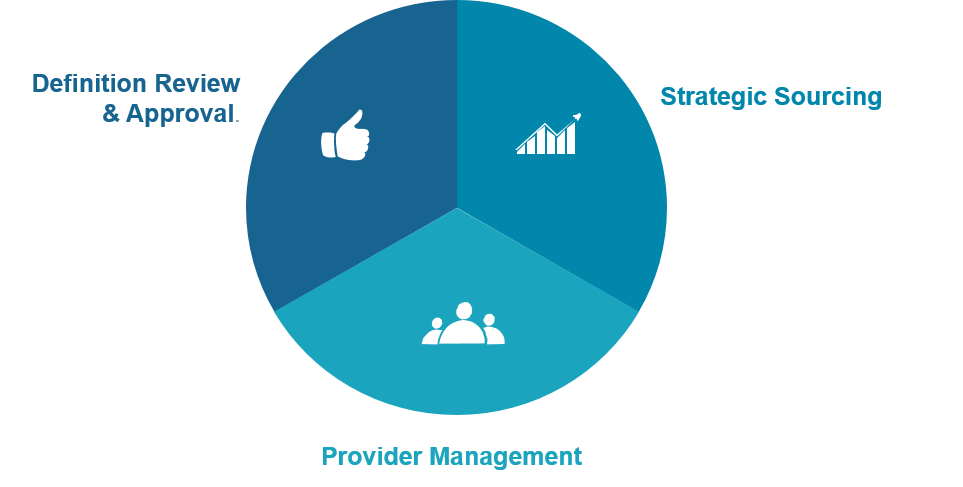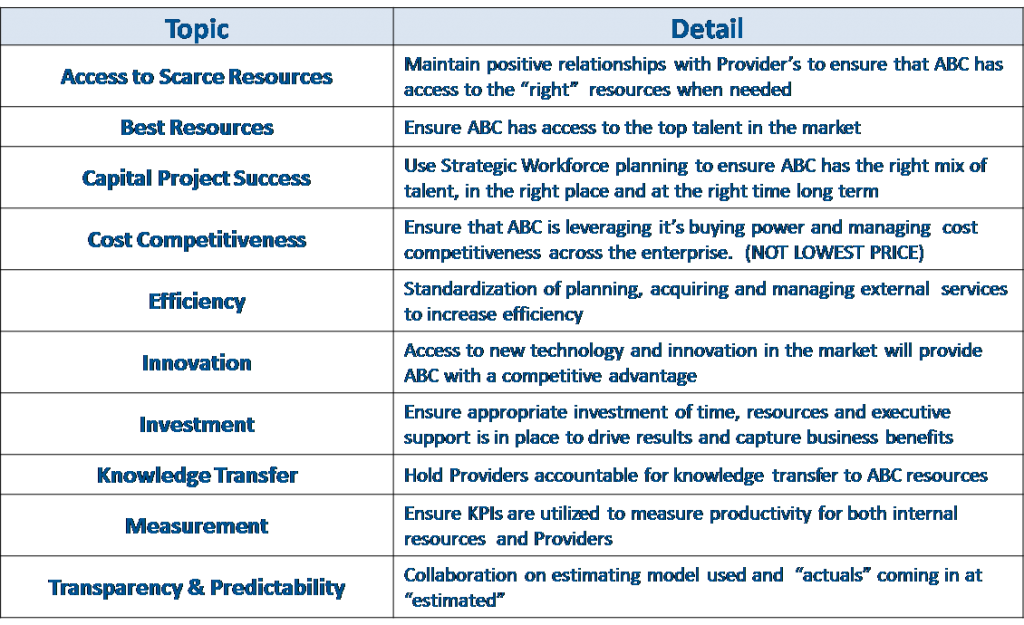The area of professional services spend continues to be a potential source of incredible value generation for most companies. Yet, most companies approach this spend segment with a very traditional sourcing approach and end up either leaving significant value on the table or in some cases, actually losing value. As we often tell our clients, getting lower hourly/daily rates is the easiest thing to do. It’s tackling the rest of the “system” or puzzle that is the challenging part and the one that yields the highest value.
You may have seen this model before from us but it merits another look.

Which of these segments do you think yields the highest value? If your answer is anything but the sourcing segment, you are correct and should move to the head of the class. The Definition, Review and Approval is the front end of this spend category where the demand is being identified and budget approvals are being sought through business cases etc. Category/Provider management is the back end where we are managing the engagements, the providers and the overall category.
Here are some of the illustrative activities you may engage in-
Definition, Review and Approval:
- Develop methods / policies to effectively determine when professional services resources are required
- Ensure the project is defined and the need for consulting services is justified
- Review and approve all projects exceeding defined thresholds prior to committing funds
- Aggregate demand
- Reduce overall usage – look to optimize resources (perform vs. buy) – Strategic Workforce Plan
- Insist on transfer of skill and knowledge
Strategic Sourcing:
- Understand supplier economics and the market
- Develop an organization wide sourcing strategy and competency
- Formalize, deploy and manage the end to end buying / sourcing process
- Source proactively, align due diligence reviews with complexity of opportunity
- Award based on clear, consistent, relevant criteria and business rationale
- Leverage specialists where appropriate
Provider Management
- Assign relationship managers to key providers
- Maintain a cross-organization view of the category
- Sell the process and goals to stakeholders
- Work closely with BU partners / stakeholders to continually meet / exceed their desired outcomes
- Establish mutual KPIs with suppliers
- Work closely with supply base to bring innovation and improvements to the business
- Act as liaison between BUs and suppliers to extract value beyond the contract
- Train BU leads to effectively manage suppliers
- Mitigate risks
Here is the biggest challenge in addressing this category as a “system”. It is easy to focus on Sourcing to try and deliver lower rates. To optimize the other two segments, you need to identify the Value Drivers for all the stakeholders involved and relentlessly try to optimize those and that is no easy task. Here is a list from a recent client engagement of all the Value Drivers that were identified.

Imagine the value that you would deliver and the high level of satisfaction you would enjoy from your stakeholders if they were convinced that these Value Drivers are the ones that you as a sourcing organization will focus on. If you attended our webinar series on Category Management (recordings available 😊), you will recognize that this is the fundamental difference between sourcing and Category Management. Applying a systems approach to this category will let you extract maximum value but is also not easy and requires far more of the strategic competencies that we keep dismissing as not as important.

